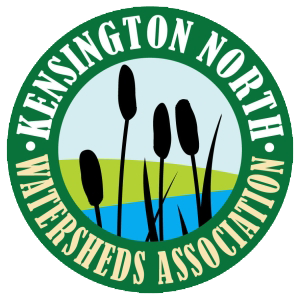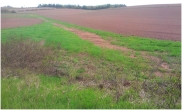Gullies and watercourses are low spots in a field where surface water will naturally drain. The sandy soils of PEI are highly erodible, in comparison to soils in other regions of the Maritimes. A heavy rainfall event may lead to water quickly running across the surface of a tilled field and moving soil, resulting in soil erosion.
Soil erosion becomes a problem for farmers and the environment when soil leaves the field. Valuable top soil, containing organic matter and soil nutrients are lost to the farmer. The capacity of the field to grow profitable crops is reduced. The soil runoff may be deposited on other land or ditches, where it is not welcome. The worst case scenario occurs when this soil enters a waterway, where it causes sediment buildup in streams.
No one wants to see excessive soil erosion. Farmers go to great lengths to keep valuable soil in place.
One of the best practices to keep soil from leaving a tilled field is to install soil conservation structures. Earthen berms guide surface water toward a shallow path or watercourse in the field. These watercourses are seeded with grass and left as a permanent feature of the field. The grass slows down and captures soil particles that may be in the surface runoff. The soil stays in the grass, dramatically reducing the amount of soil that leaves the field. The grass also prevents trenches from being formed in these low spots.
Grass waterways are considered by some as the greatest step forward that farmers have taken in recent years to reduce erosion. To quote a retired farmer, “Twenty years ago it was an exception to see a grass waterway in a field. Today, the exception is to see a field that needs a grass waterway that doesn’t have one.”
Between the Members of the East Prince Agri-Environment Association (the Dunk River area), there is a total of 45 miles of grass waterways and 16 miles of berms (source: PEI Dept. of Agriculture and Forestry). These practices are carried out on farms across Prince Edward Island.

This column is presented by the Kensington North Watersheds Association and the East Prince Agri-Environment Association to inform our communities of the ongoing efforts farmers are taking toward good environmental stewardship.

